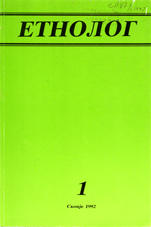Миграции на децата бегалци од Егејскиот дел на Македонија
The migrations of the children refugees from the Eagean part of Macedonia
Author(s): Vangel KačevSubject(s): Anthropology
Published by: Здружение на етнолозите на Република Македониjа - Музеj на Македониjа
Keywords: Егејски дел на Македонија; Граѓанска војна; Грција; Егзодус; Македонци; бегалци; Елас; деца-бегалци; Југословенски црвен крст; Република Македонија; граѓански права
Summary/Abstract: With the newly created conditions on the Balkan, after the five centuries of the Turkish rule, the people of the Balkan gained independence and states, except for the Macedonians who were devided among Greece, Serbia, Bulgaria and Albania. The new borders brought new internal and external migration movements, as a result of the denationalization and assimilation of the Macedonian people, mostly on the territory of Aegean Macedonia and in the Greek borderlines. More than 90.000 Macedonians emigrated from this part of Macedonia after the 1st World War, when the Lausanne agreement was issued. With the agreement between Turkey and Greece, over 40.00 islamized Macedonians were settled in Asia Minor and their destiny is unknown. During the Hnd World War and the Civil war in Greece, over 50.000 Macedonians fleed from the Aegean . part of Macedonia. A special place in the migration movement of the Macedonians is the migration wave of children. Namely, over 27.000 children from the age of 4 to 14 fled to the socialist countries from the Civil war in Greece. The children were placed in orhanages, and a larger number in special children homes in Yugoslavia, in Vojvodina and Macedonia. After the tragic defeat of the Civil war, when the parents of these children where forced to leave their native land and emigrate to forein countries, there came the period when the Macedonian family was disintegrated, and a possibility existed for the extinction of the Macedonian population in the Aegean part. The largest number of these children refugees presently live in the liberated part of their country the Republic Macedonia in Yugoslavia, with the hope that the entire Macedonian population will be united.
Journal: Етнолог - списание на здружението на етнолозите на Македониja
- Issue Year: 1992
- Issue No: 1
- Page Range: 73-82
- Page Count: 10
- Language: Macedonian
- Content File-PDF

